Hi all, because part 2 has appeared to have run its course, and I don't know the date of my next appointment for my eye operation, I've decided to strike while the iron's hot. Apologies for any mistakes that one finger and one eye might bring.
Everton
Founded as St Domingo FC 1878, renamed Everton FC 1879.
Ground: Goodison Park.
From a Sunday School came Everton, for when the original club was founded in 1878 it was St Domingo FC connected with the Congregational Church. Next year, it changed its name to Everton FC and, as Everton and toffee are known to go together, it was inevitable that the club became the 'Toffeemen'.
Playing at first on an unenclosed ground near Stanley Park, where as Everton, they staged their first match on 23 December 1879, they later moved to Priory Road where a gate could be taken. This in fact amounted to 13s. Next year, Anfield Road became their home, and they became members of the Lancashire FA.
Local football was good and Everton steadily advanced in name and in fame, yet it was hardly up to top standard for, in August 1886, the minutes of the Lancashire FA say,"Resolved that Everton be not allowed to play for the Senior Cup until they show proof of their ability". They were therefore permitted to take part only in the Junior Cup competition. However, in 1887, the application by Everton to play in the Senior Cup was granted. Their experience in this competition later on reads like a tragicomedy, although they won that Cup three times by 1910.
In 1888, they were good enough to be selected as one of the twelve original members of the Football League. They stayed in Division 1 until 1930, had one season in Division 2 and kept in the upper circle until 1951, returning to Division 1 in 1954 and returning to where they were in 1888. Five times they have been League Champions, 1891, 1915, 1928, 1932, and 1939. and they have occupied second place six times. In three consecutive years from 1931 to 1933, they topped Division 2 in 1931, and Division 1 in 1932, followed by winning the FA Cup in 1933. a unique achievement.
In the FA Cup, they made their initial start in the competition proper in 1889 beating Derby County 11-2. By 1892-3 they, had reached their first Cup Final to meet the Wolves at Fallowfield, after dealing with West Bromwich, Nottingham Forest, Sheffield Wednesday, and Preston North End, which last hurdle took three matches to settle. Suffice to say that Wolves won the final 1-0. In all, Everton have contested five finals and won two, in 1906 at Crystal Palace where they beat Newcastle 1-0, and at Wembley in 1933 when they defeated Manchester City 3-0. In 1897 Aston Villa beat them 3-2, all five goals scored in the first 22 minutes, and in 1907 Sheffield Wednesday won also at Crystal Palace, by 2-1. In 1950 and 1953, the semi-final was reached.
The Liverpool Senior Cup was first won in 1884, since then it has had "Everton" inscribed on it thirty times as holders or joint holders.
Goodison Park, to which Everton migrated in 1892, is one of the finest club grounds in the world. On its pitch, it has staged the FA Cup Final, FA Cup Final replay and FA Cup semi-finals, and International games galore. In 1948, for the game with Liverpool, no fewer than 78,299 people were present, whilst gates of seventy thousand are not infrequent.
Everton has been supplying international players since 1890, so but a few can possibly be mentioned. These must include, Nick Ross, Johnny Holt, John Bell, Wm Scott, Harry Makepeace, Jack Sharp, Harold Hardman, Sam Chedgzoy, Warney Cresswell, Dixie Dean, Ted Sagar, Joe Mercer, Tommy Lawton, and Cliff Britton. What a team could be made up of Everton players through the years! Dean's 60 goals in 1927-28 is still a League record.
Notts County
Formed 1862, Limited Company 1888
Ground: Meadow Lane
Rivalry in sport has existed between the men of the county of Nottinghamshire and those of neighbouring Yorkshire for many years. Well over a century ago, it centered on cricket, but when the association game gained a foothold in Sheffield, it soon spread to Nottingham, and by 1862 the Notts County cricketers were playing football of a kind, on the park. In 1863-64 the club migrated to The Meadows, the home of sport in the city. Here the "amber and blacks" made their name with such names as Blake Baillon, Richard Daft, George Parr, and the famous E H Greenhalgh who joined in 1867, playing matches against Newark, Trent College, and the Sheffield club. By 1872, Greenhalgh gained the first international honour of the club, and matches with the Cup-holders The Wanderers, and Queens Park (Glasgow) followed.
By 1881, it was known as the team of brothers, for there were at least two of the Greenhalghs, the Curshams, the Ashwells, the Morses, the Dobson', the Jessops and the Oswalds. But 1881 was a critical season, yet the crisis was surmounted, and as the "Chocolate and Blues", with William Gunn and six others with international experience, County reached the semi-final of the FA Cup in 1882-83, and Trent Bridge became an honoured name in football. By 1884, they were again in the Cup semi-final, then the County forsook amateur status in 1885 and a lean period followed.
However in 1888, the club became one of the original twelve of the Football League, it became a limited company and by 1891 had reached third place in the League, and the final of the Cup, but had to be satisfied being runners-up to Blackburn Rovers. In 1893 it lost its place in Division 1, but staggered everybody by winning the Cup in 1893-94, the only Second Division club to do this before 1910. This Final against Bolton Wanderers was the last to be played in the north, it was at Everton, before the long Crystal Palace series began. It was not until 1922 that the County again hit the heights in the Cup. Here it took them nine attempts before disposing of Grimsby Town, Bradford City, West Bromwich, Aston Villa, and then they lost to Huddersfield Town in the semi-final.
In the meantime, County had regained Division 1 status in 1897, and held this 'rather precariously' at times until 1913, when it fell, for one season only, to Division 2. Just after the First World War, it went down for 3 years, rose for another 3, and after 4 more seasons in 1931 descended to Division 3 for 1 year. For four seasons it struggled perilously near the foot of the table until 1935, it again suffered relegation to Division 3 where it had to stay until 1950, when it was well on top of the South Section and regained its place in Division 2. It was not until 1955 that it succeeded in getting into the upper half of the table, however, the success was short-lived, for in 1958 back in Division 3 and after one campaign shared with Doncaster Rovers the unenviable fate of suffering relegation in consecutive years.
Of late years, many well known players have worn its colours; W Corkhill, H Connor, Eric Houghton, Tommy Lawton, Tom Johnston, Frank Broome, Leon Leuty and R M Wylie being but a few. Sensations in money matters seemed related to Notts County in the transfer of Jacky Sewell to Sheffield Wednesday at an astronomical fee.
Meadow Lane housed a crowd of 45,019 in 1921 for the Cup-Tie with Aston Villa, 46,500, in 1952 at the Portsmouth Cup-Tie, but for the local derby with the Forest in 1950, no fewer than 49,000 were present.
Preston North End
Formed in 1880, Limited company 1893
Ground: Deepdale
Proud Preston, The Old Invincibles, The Lambs, so go the various names by which this famous club has been called. Twice winners of The Cup, twice Champions of the Football League, five times relegated to Division 2, three times top team in that Division. What a story! Add to this five times runners-up in Division 1, six appearances in the Cup Final, expelled from the Cup competition for playing professionals before they were legalized, winning both the League and the Cup in the same season, and going through the season's Cup competition to become winners without having a goal scored against them. Such is Preston North End.
Yet it has not always had an easy path. Starting from a cricket club, and playing rugby, its members decided to adopt the association code in 1880. Many and hard were the lessons to be learned, and neighbouring clubs like Blackburn Rovers were stern and heavy tutors. Brighter times came with season 1883-84 when, through the efforts of William Suddell, Deepdale was secured, and Scotsmen quietly arrived in Preston, ostensibly to find employment, but really as 'professors of the art and skill of football' for which contrary to the existing regulators, they asked and received payment for services rendered. These included such men as Nick Ross, George Drummond and Sandy Robertson, and these 'foreigners' joined local players like F Dewhurst, Rob Howarth, and W C Rose, so that the record for season 1883-84 ran, 44 matches played, 30 won,10 drawn, 4 lost.
The open admission that players were paid for playing football in 1884 led to the great decision of the Football Association in 1885 to legalize the practice. Out of the need to make regular wages came the formation of the Football League, and Preston was a founder in 1888, and the first Champions, securing 40 points out of a possible 44, without sustaining a single defeat. Champions again in 1890, then three times runners-up, they fell from grace in 1901 for three seasons, and they were relegated in 1913. The longest spell in the lower Division lasted from 1925 to 1934, and they lost place again for season 1948.
The Cup story is football history with its first win in 1889 by beating Wolves 3-0 at the Oval, they never played in a final at Crystal Palace, for it was at Stamford Bridge in 1922 that Huddersfield Town won by a penalty kick, and it was at Wembley in 1938 in that fateful last few seconds of extra time, that they beat Huddersfield Town in a similar manner. Twice more they visited Wembley, in 1937 and in 1954, but they had to acknowledge that Sunderland and West Bromwich were the masters.
Deepdale in 1934 housed a crowd of 40,180 for the Cup-tie with Northampton Town, but for the League match against Arsenal in 1938, no fewer than 42,684 were present. The Lancashire Cup has been won several times. The record score of 26-0 in the FACup was made by the 'North Enders'. They toured America in 1930 and played under artificial lighting long before its present phase.
Of its famous players, these names must be mentioned,: Dr Mills-Roberts, J F Mitchell, Alex James, Bobby Crawford, Joe McCall, Peter McBride, Andy Beatie, and Tom Finney.
Acknowledgement
Association Football – The Caxton Publishing Company Ltd, 1960

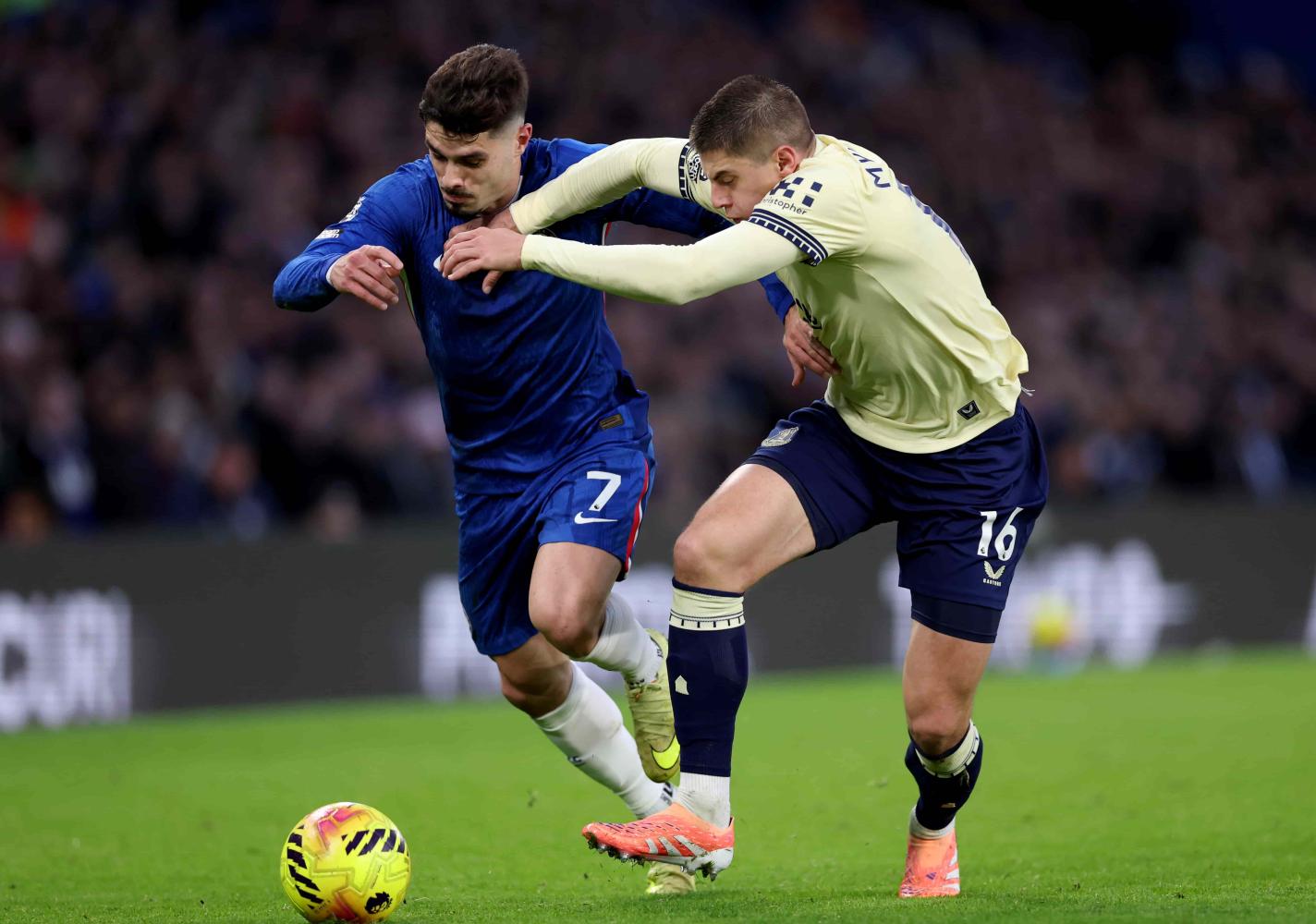
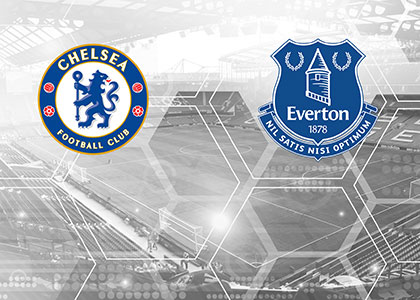
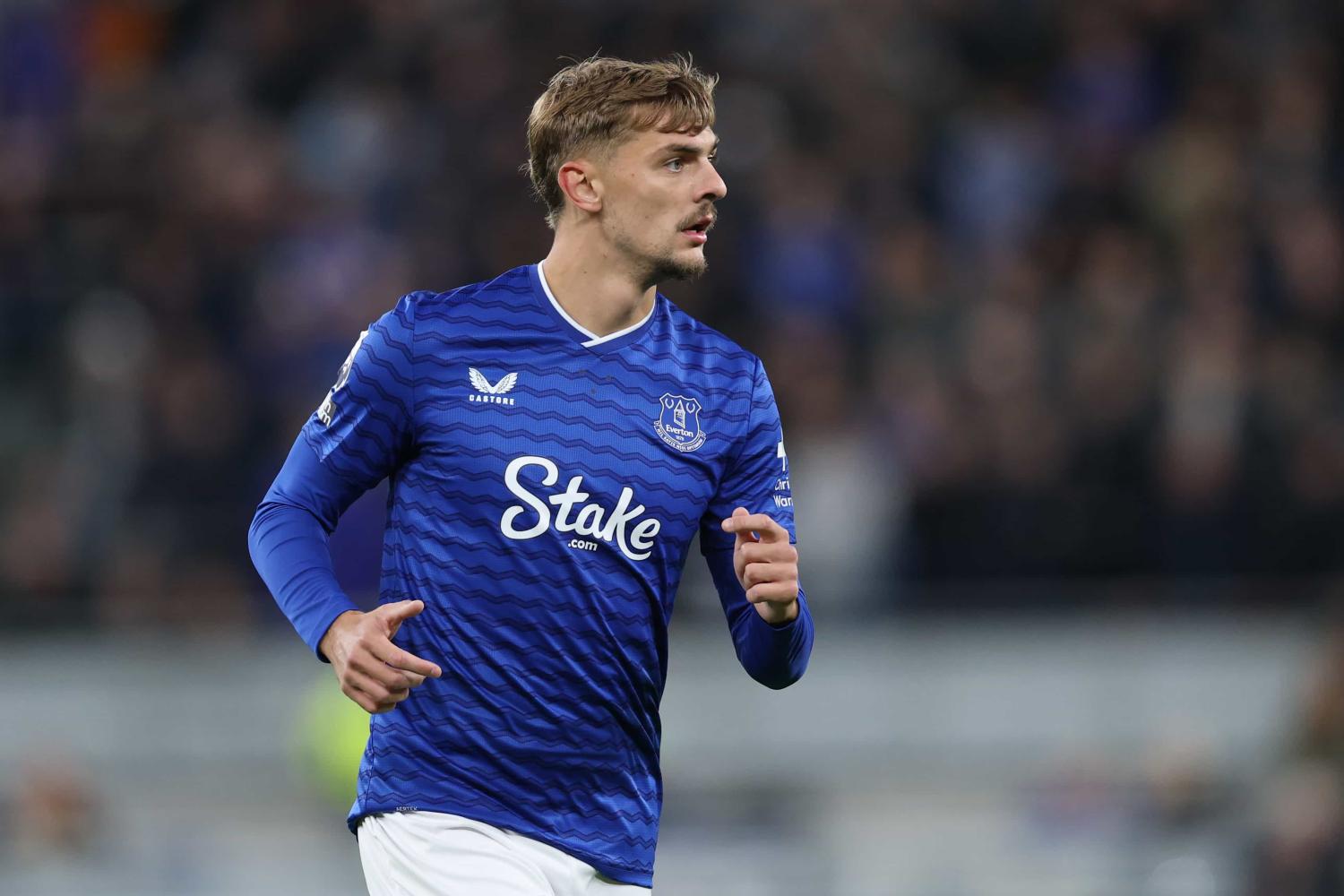


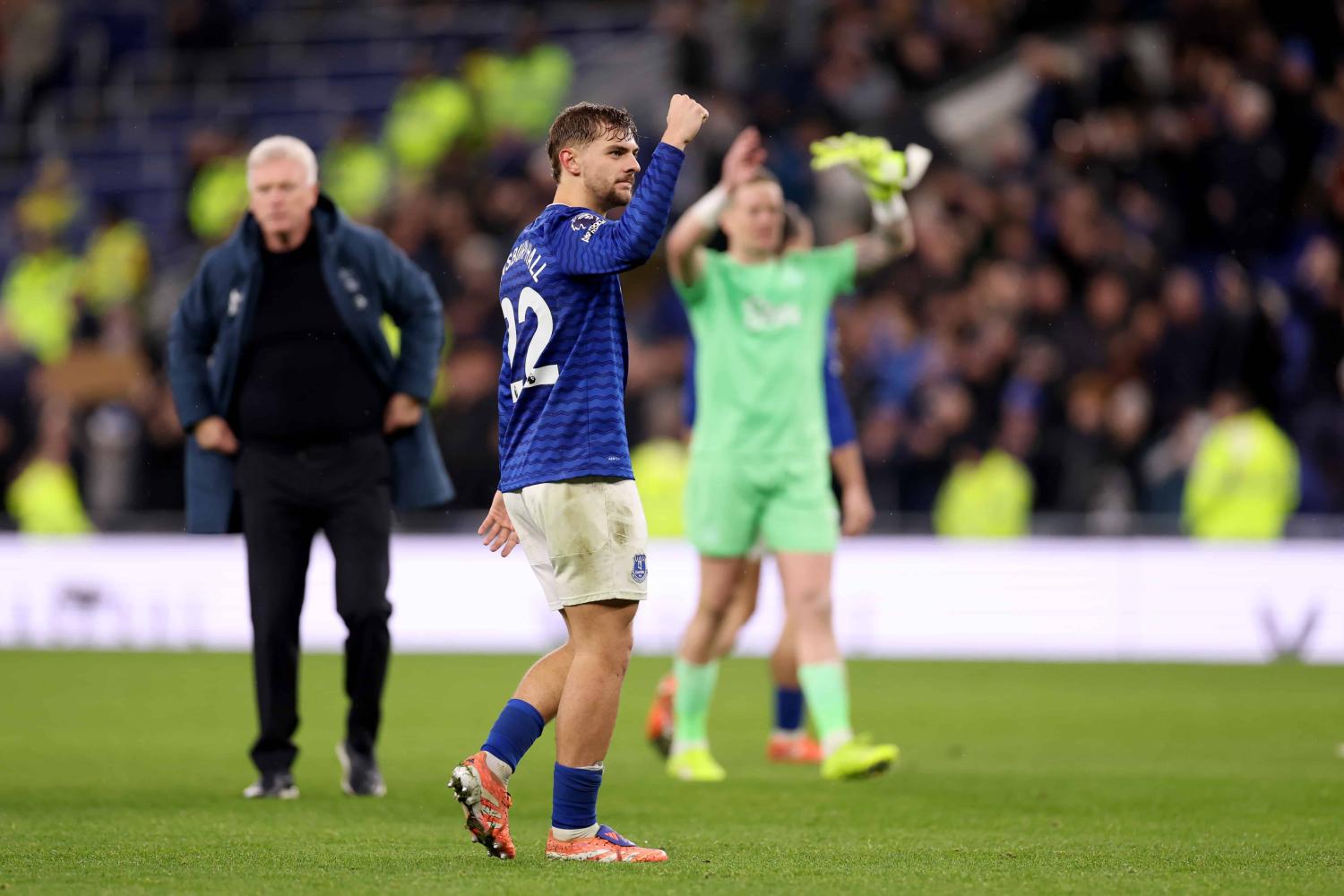


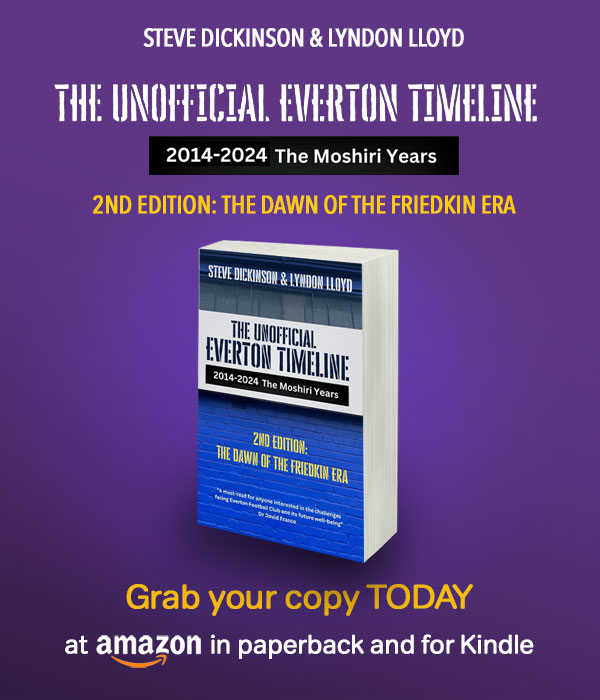
1 Posted 20/07/2023 at 23:49:53
Once again fascinating stuff. I was going to point out that PNE were also in the 1964 Cup Final but then remembered that you're using the The Caxton Publishing Company Ltd, 1960 information.
One thing I would add, though, is that because the accommodation at Priory Road wasn't ready for the start of the 1883-1884 season, Everton played their opening fixture(s) at the home of Stanley FC at Walton Stiles, in City Road.
This was on the right hand side of City Road (with Goodison behind you) and was somewhere near the railway line. It was probably after the railway because this piece of land had never been built on and until about the 1990s was a Jobcentre car park which was also used on matchdays. I don't know what's on there now.